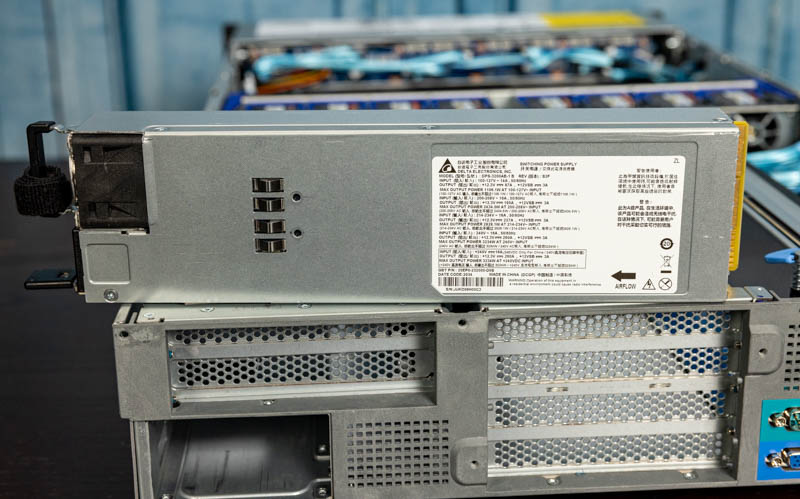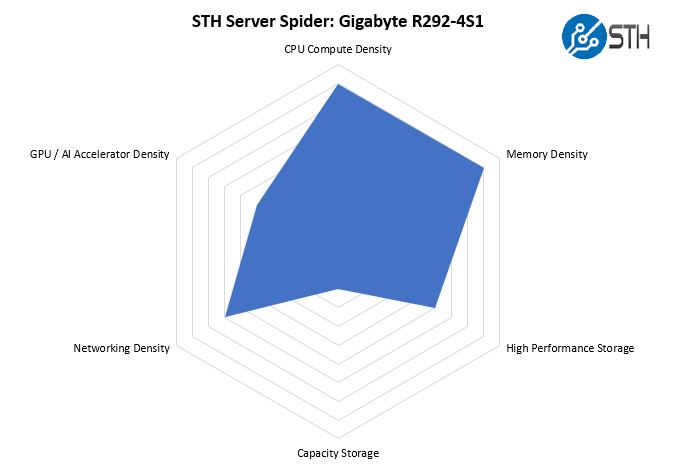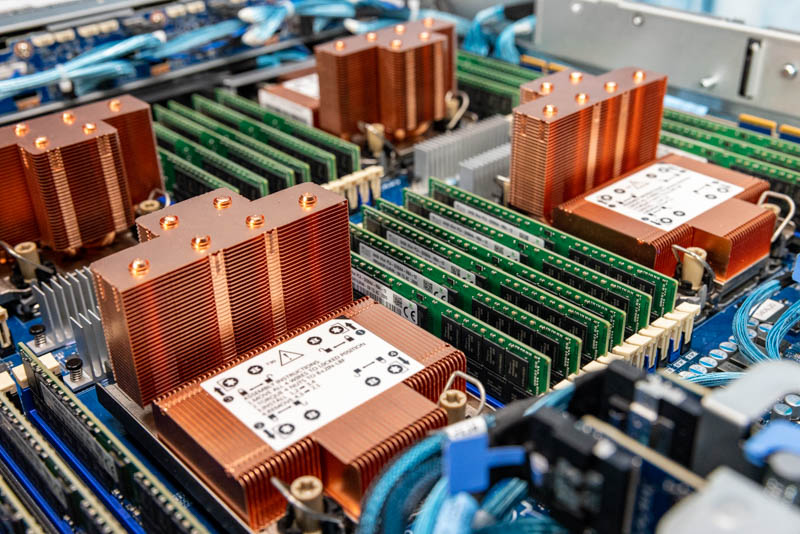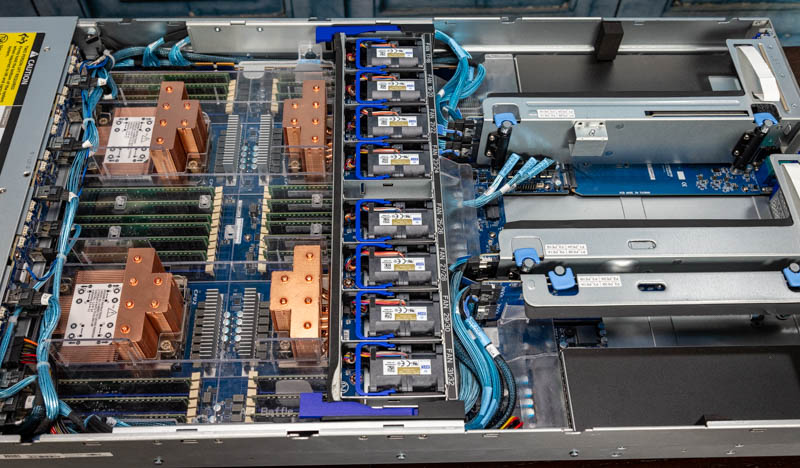Gigabyte R292-4S1 Power Consumption
The power supplies for the Gigabyte R292-4S1 are rated for up to around 3.2kW at 240V, but we used our standard 208V Schneider Electric/ APC PDUs to take measurements.

Here is what we saw from the system:
- Idle: 0.4kW
- STH 70% Load: 1.4kW
- 100% Load: 1.6kW
- Max observed: 2.0kW
We are just going to quickly note here that this is far from a top-end configuration. Intel Optane PMem 200 modules can run at 18W so adding 24x 18W can push more than 400W of additional power consumption into the system and there is more room for PCIe devices to use power. Again, 1kW even in the Silicon Valley (a more expensive market) costs only around $275-300/ mo to power and cool and a dual-socket Xeon Platinum 8280 server is not far off of half of the power consumption we have here. While the power consumption may seem high to some, this is a quad-socket server.
Note these results were taken using a 208V Schneider Electric / APC PDU at 17.5C and 71% RH. Our testing window shown here had a +/- 0.3C and +/- 2% RH variance.
STH Server Spider: Gigabyte R292-4S1
In the second half of 2018, we introduced the STH Server Spider as a quick reference to where a server system’s aptitude lies. Our goal is to start giving a quick visual depiction of the types of parameters that a server is targeted at.

This is a scale-up compute and memory platform so we get excellent density there. One can go to 2U 4-node servers to get more compute density, but for a single node this is about as good as it can get, especially given the memory capacity.
Having all of the PCIe connectivity means that there is a ton of expansion options. There are no 3.5″ drive bays but that PCIe connectivity can be used for SAS controllers, FC controllers, or high-speed networking to reach capacity storage. While we can get plenty of GPUs in the system, Gigabyte has the R292-4S0 model which is better suited for that workload.
Final Words
Overall, this is an impressive system. It also shows a bit about where we are going in terms of power consumption. These 250W TDP Intel Xeon Platinum 8380H CPUs are a jump from the 205W max in the previous generation, but we have already tested 280W TDP CPUs and the NVIDIA A100’s are already operating at either 400W or 500W depending on the system. TDPs are going to rise as more systems get larger.

Gigabyte did an excellent job packing a massive amount of computing, memory, and PCIe I/O into a sub 34″ 2U system. That helps these systems fit in racks that are otherwise too short to handle the large systems. There are a few trade-offs made that will make servicing more challenging portions of the chassis, but we found those were a few seconds extra of effort and likely worth the trade-off for having a shorter more flexible form factor.

Overall, this is an absolutely awesome platform that is designed for high-memory configurations. For those who are focused on scale-out dual-socket computing, it may not be necessary. For those who can benefit from scale-up, this may be the right solution.




This is exactly why we read STH. Ya’ll on a roll with these. It’s like “hey there’s this thing, here’s everything you need to know about it” BOOM.
I wish you reviewed every server out there so the server buying experience was more transparent. I know that’s impractical, but this is so much better than the Dell marketing material on its servers and the junk they pass off as collateral. Oh and I don’t think Dell even has these just the R940/R840 so this is technically higher-end than Dell’s highest-end 4-way
Best review, also only review. Nice STH on not squandering and doing good write up.
I’m learning so much here
I didn’t even know what cooper was until I saw the heatsink video with this system